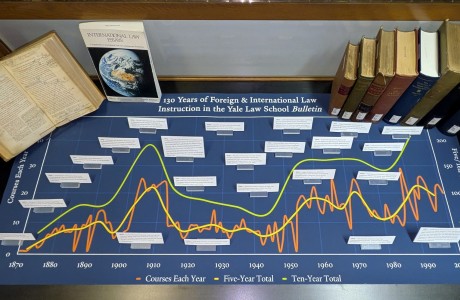
Looking for the dates each country became party to a particular treaty?
If the U.S. is a party, Treaties in Force is a great place to begin any treaty research. It is a comprehensive list of treaties currently in force to which the United States is a party. Bilateral treaties are listed in alphabetical order by country with subject headings under each entry. Multilateral treaties are arranged by subject. Some back issues are available online as well as the current version. Unfortunately, Treaties in Force does not include the dates each country signed or became party to each agreement.
HeinOnline’s Treaties and Agreements Library is another go-to resource for online treaty research. This collection includes treaty guides, indexes, and a selection of both official and unofficial treaty publications.
The depositary for a treaty is the authoritative source for the current list of parties to that agreement. The UN is often the depositary, though a particular country may be designated, especially for older treaties. The State Department maintains a list of Multilateral Treaties for which the United States Is Depositary. Many, but not all, have status lists including dates of acceptance, approval, or ratification.

Finding a comprehensive list of all dates that each country adhered to a particular treaty can be hard to track down, especially if the treaty is old. If you can’t find the answer online using the resources listed above, check out the print-only Multilateral Treaties: Index and Current Status. This resource includes each date of adhesion/succession as well as general information about treaties dating back to 1856. Don’t forget to check the supplement, which is current through 1995.

The Multilateral Treaty Calendar provides additional citations to printed text of treaties from 1648-1995 as well as information about status, duration, depositary location, amendments, additional protocols, and more. This resource does not list the dates each country adhered to the treaties.
Confused about terms used in treaty research? The UN has a glossary to help you. The Oxford Guide to treaties is an excellent introductory text (in print) that explains the general principles of treaty making. The Peace Palace Library also has an excellent treaty research guide.
For additional guidance, see:
United States Treaty Research and Interpretation
Steps to Researching Treaties in Foreign Jurisprudence
Treaty Research II: Finding the Citation
Treaty Research III: Finding Travaux Preparatoires
Citing a Treaty According to The Bluebook
If you need further assistance with your treaty research, contact a reference librarian at lawref@pantheon.yale.edu. We’re happy to help!

